#dike goddess
Explore tagged Tumblr posts
Text
Greek Gods 101: Dike
Dike is a Goddess of justice, fair judgements, and rights. Excluding the universal offerings, some common offerings include:
Scales Imagery or Figurines
Court Documents
Sword Imagery or Figurines
Blindfolds
Courthouse Imagery or Figurines
Gavel
Laurel Leaves
Laurel Wreaths
For devotional acts, some activities that can be done for her include:
Watching or Reading Court Proceedings
Reading Through Court Records
Judging People Fairly
Learning About the Justice System
Learning About the Law
Learning About the Law-Making Process
Researching Your Local Laws
She is celebrated in 1 Athenian holiday.
Demokratia
#dike#dike goddess#dike deity#deities#hellenism#helpol#hellenic#hellenic pagan#hellenic polytheism#hellenic community#hellenic polytheist#hellenic deities
25 notes
·
View notes
Text
Horae
Horae (or Horai) are the seasons of Hellenism. They are often seen as a group of three goddesses, however in reality there are many variations on which goddesses they are, or even if they are epithets of each other.
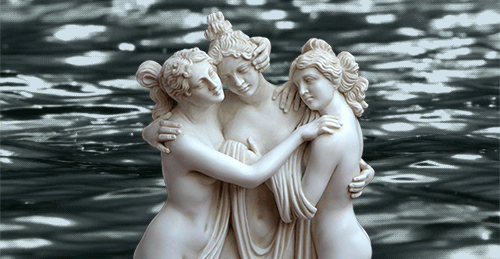
Most commonly the three Seasons are seen as Dike (personification and goddess of divine justice), Eunomia (goddess of good order and lawful conduct), and Eirene (goddess of peace). This, however, is their later interpretation. Slowly across the Classical and Hellenistic Periods the Horae changed from season deities to goddesses of order and justice.
So while Lady Dike, Lady Eunomia and Lady Eirene are correctly the Horae, they are also correctly Thallo (goddess of "green-shoots" and blooming), Auxo (goddess of vegetation and growth at full bloom), and Karpo (goddess of ripening plants and fruits of the earth).
It's good to note that each Goddess here is also a Daimon, a personification, of their respected rulings. For example, you may find confusion while speaking of Karpo as the personification of Autumn, due to her also being the goddess of ripe fruit. This could easily be meshed in one's mind with Lady Demeter, goddess of the Harvest, who is commonly associated with autumn. However, Lady Demeter is not a personification, and is an Olympian Deity, marking her vastly different from Lady Karpo as the Daimon and Goddess of Autumn itself.

In the Iliad, the Horae were keepers of Zeus's gate on Olympus. This is thought to be their earliest written record. Here the Horae were said to be born of Zeus and Themis, meaning they would be the later goddesses.
Primarily, the earlier variation of the goddesses were worshipped in rural Greece. The later were also adopted in rural areas, but less as nature deities and more of goddesses that represent farming prosperity. The earlier goddesses are often seen with Chione (goddess of snow) and Orithyia (goddess of cold mountain winds). Together, Thallo, Auxo, Karpo, Chione and Orithyia were seen as handmaidens/entourage to Persephone as the goddess of the turn of seasons.
Nonnus described the Horae as four daimons, the daughters of Helios (And sometimes Selene) and handmaidens of Queen Hera. These daimons are different from the previous group due to them not only being seen occasionally as winged children, but also being not goddesses but personifications. These daimons are Eiar (personification of spring), Theros (personification of summer), Phthinoporon (personification of autumn), and Cheimon (personification of winter). However, this variation of the Horae are from a Greek poet living in Imperial Rome, so take it with a very large grain of salt as a Hellenist. But if you worship the Roman pantheon, you might want to look more into this variation than others!

Personally, as a Hellenist myself, I look more towards the first two variations of the Horae. Not one is wrong in their claim to their sisterhood of the Horae. With Cronus's wheel of time comes change, and it is only natural for it change as such. I worship both trios (and Chione + Orithyia) as the Horae, because they both are! They are goddesses of time in their own respect, and all eight deserve reverence, worship, and devotion as goddesses that aid us in every turn of life.
HELPFUL LINKS:
#hellenic polytheism#hellenic witch#hellenism#hellenic deities#hellenic polytheistic#hellenic worship#hellenistic#horae#horai#Eirene goddess#Dike goddess
8 notes
·
View notes
Text

Eirene and Dike
No Peace without Justice
#greek mythology#greek pantheon#Dike#eirene#greek goddess#Themis#Horae#goddess of justice#goddess of peace
1K notes
·
View notes
Text
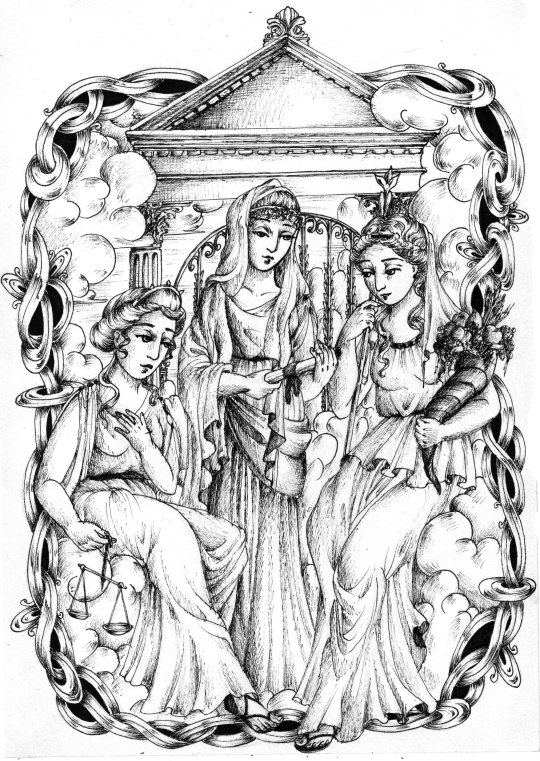
Dike, Eunomia, and Eirene by the gates of Olympus.
This was a commission for @percymmon
#horai#Dike#Eunomia#Eriene#greek mythology#myth#myhtology#greek goddess#goddess of justice#goddess of law#goddess of peace#pen and ink#illustration#drawing#art#artists on tumblr
71 notes
·
View notes
Text
this suffragist pin is officially the first thing to go on my altar for lady dike <3 i've definitely been neglecting my worship of hellenic gods a bit the past couple weeks, but i know they understand. trying to balance two religions is not exactly easy.

#shout out to my best friend who gave me the pin#he knows me so well#helpol#lady dike#goddess dike#paganism#hellenic polytheism#hellenic worship#deity work
8 notes
·
View notes
Text
Still thinking about the fact that Cassandra, a goddess of mystery and doubt, was married to Ankarna, who originally included justice in their domains. It's easy to think of justice as being about knowledge and certainty-- a wrongdoer was identified, and justice was done.
But thinking about justice in the context of the courts, seeking justice also relies upon us being willing to entertain uncertainty, to acknowledge that the process of finding the truth matters. Justice cannot be predetermined, or it is not justice at all-- it cannot exist without doubt.
#dimension 20#fantasy high junior year#dimension 20 spoilers#d20 spoilers#fantasy high spoilers#also wikipedia says that the greek goddess of justice is named dike (rhymes with nike) and I think that's beautiful
45 notes
·
View notes
Text
Alright Virgos / mythology nerds / zodiac signs enthusiasts, pick your goddesses!
Which one represents the Virgo constellation?
#virgo#virgo constellation#zodiac signs#greek goddesses#greek deity#greek mythology#demeter#persephone#kore#erigone#astraia#dike#polls#poll stuff#tumblr polls#i'm bored idk#just wanna do something fun with you guys
4 notes
·
View notes
Note
😍
https://x.com/theswiftsociety/status/1694850727544279337?s=46&t=OnZ0f24mD0XxPzNjM5Rv8Q

the outfit — I
47 notes
·
View notes
Text
Just idly realized that Hazel Levesque is the daughter of the the God whose two domains most define the existence of Batman- Pluto, God of Wealth and the Lord of the Dead.
I'm not sure what I'm going to do, if anything, with this connection. But still.
#I mean theoretically Themis titaness of Justice and Dike goddess of justice might get a look in too#but does Pluto have a special interest in Bruce Wayne?#is there a Roman Greek squabble because Athena goddess of strategy/war moved in on th sigular person who beat unites Pluto's 2 Roman domains
3 notes
·
View notes
Text
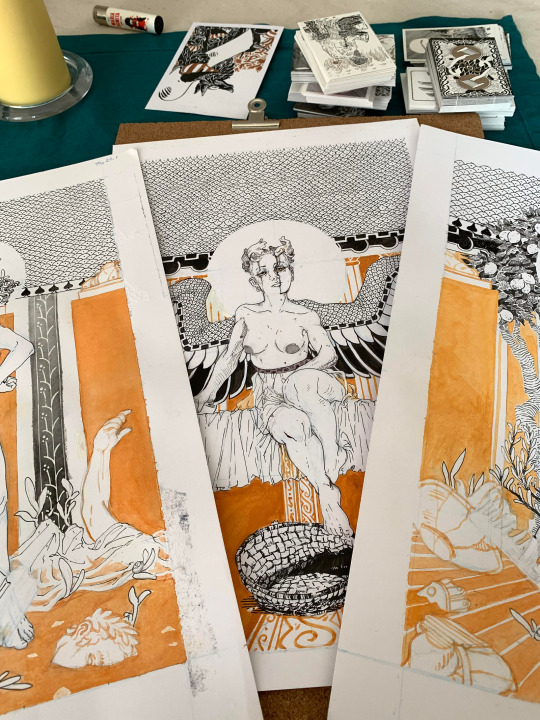
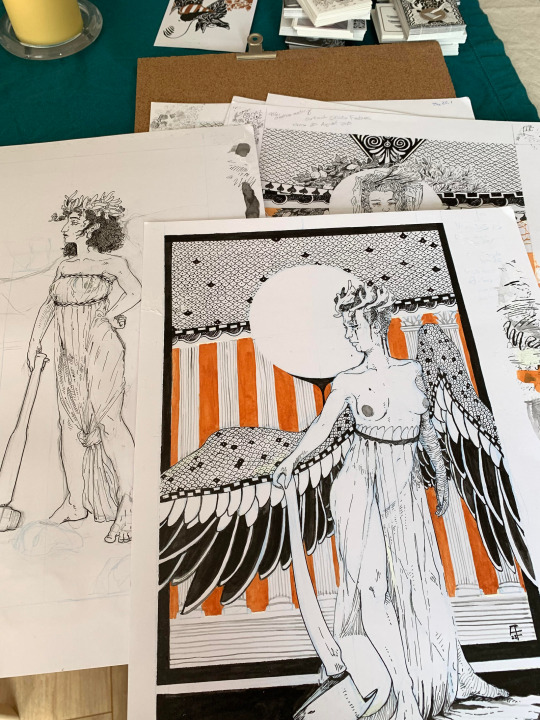
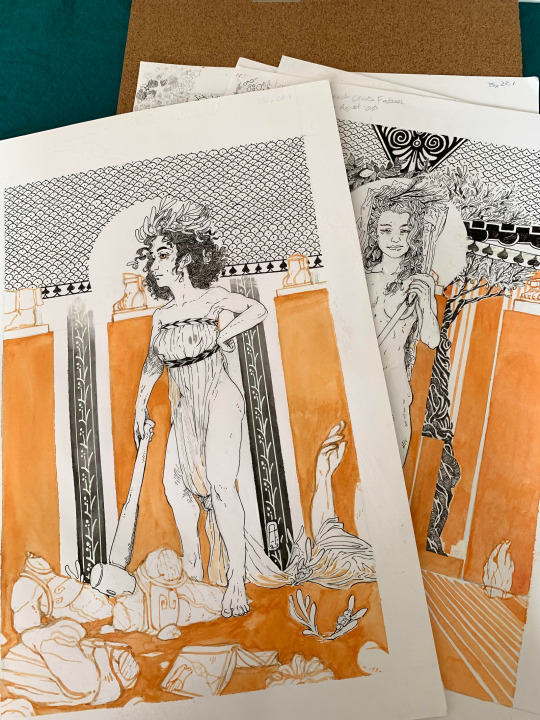
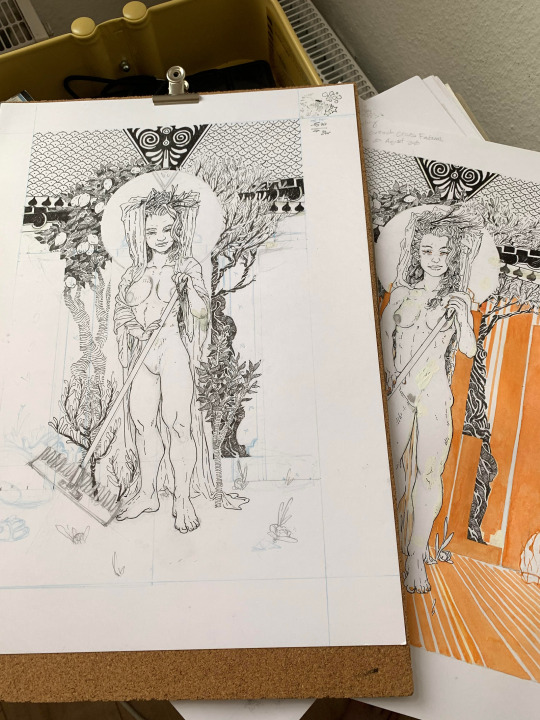
I've been quietly working on a series of three drawings for a long time now. Why are there seven? That's why it's been taking so long! Since these are personal works I've been able to start over if I decide a nearly-finished piece isn't where I want it to be -- which I have to do when working traditionally. Nemesis, Dike, and Themis will be available for full viewing soon! For being my decade-enduring Tumblr audience you also get a WIP preview of the last piece, Themis, that other platforms don't get. Thanks for sticking with me.
#artists on tumblr#greek mythology#justice#goddesses#dike#themis#nemesis#greek pottery#red figure pottery#illustration#pattern design#ink#watercolor#alex finis
7 notes
·
View notes
Text
Time to write about Dike being in love with Bruce like I've been daydreaming about for the past three weeks 💞
#you don't understand I need to write this#i did INDEPTH research about greek goddess of justice#ive decided on dike cause she's about human law but can overlap with “natural/divine law” with her mother Themis#also gonna write her going ham on adikia after jason dies hehehehe#batman#bruce wayne#greek goddess#dike
2 notes
·
View notes
Text
⚡︎ Zeus ⚡︎
˚ ✦ . . ˚ . . ✦ ˚ . ★⋆.

Most info gathered by theoi.com, study.com, and google, or by Zeus himself with pendulum (The Devotional Part I asked Lord Zeus about)
˚ ✦ . . ˚ . . ✦ ˚ . ★⋆.
⚡︎⚡︎⚡︎ :Etymology: ⚡︎⚡︎⚡︎
Greek Name: Ζευς Transliteration: Zeus
Latin Spelling: Zeus Translation: Jupiter, Jove
Study.com result: His name, which means "sky father," was derived from the Proto-Indo-European word that means "to shine." In ancient Greek culture, Zeus and his name were the personification of the sky. Zeus's name was originally used to describe his powers.
⚡︎⚡︎⚡︎ :Relationships: ⚡︎⚡︎⚡︎
Main Spouse: Hera, Goddess of Marriage, Women, Family, Fertility, and Childbirth
Affairs: Metis, Themis, Eurynome, Demeter, Mnemosyne, Leto, Dione, Persephone, Asteria, Aphrodite
Siblings: Poseidon, Hades, Hera, Hestia, Demeter
Parents: Rhea and Cronus/Kronos
Most Known Children: Aphrodite, Apollo, Artemis, Ares, Athena, Dionysus, Hermes, Persephone, Pan
Least Known Children: Agdistis, Aegipan, Aletheia/Alatheia, Asopus, Atë, Britomartis, Dike, Eileithyia, Eirene, Eris, Ersa, Eunomia, Harmonia, Hebe, Hephaestus, Horai/Horae, Kabeiroi/Cabeiri, Kairos/Caerus, Kentauroi Kyrpioi (Cyprian Centaurs), Charites, Korybantes Samothrakioi (Samothracian Corybantes), Litae, Melinoë, Moirae, The Nine Muses, Nemea, Nymphs, Themeides, Palici, Pandeia, Phasis, Zagreus
Mortal Children: Aeacus, Aethlius, Acheilus, Alexander the Great, Amphion, Argus, Arcas, Arceisius, Atymnius, Dardanus, Dioscuri, Emathion, Endymion, Epaphus, Graecus, Helen, Hellen, Heracles, Herophile, Iarbas, Iasion, Ceroessa, Colaxes, Corinthus, Crinacus, Cronius, Cytus, Lacedaemon, Latinus, Magnes, Makedon, Manes, Megaros, Meliteus, Minos, Myrmidon, Orion, Pelasgus, Pirithous, Polydeuces, Rhadamanthys, Saon, Sarpedon, Spartaios, Tantalos, Targitaus, Tityos, Zethos
⚡︎⚡︎⚡︎ :Sacred: ⚡︎⚡︎⚡︎
Animals: Eagles, Bulls, Swans, Goats, Cuckoos, Wolves, Snakes
Items: Thunderbolt, Royal Sceptre
Plants: Oak Tree, Olive Tree
⚡︎⚡︎⚡︎ :Devotional Info: ⚡︎⚡︎⚡︎
Major Arcana: Justice, The Magician, The Emperor, Strength, The Sun, Judgement
Tarot Suits: King of Swords
Color Associations: Gold, Yellow, Blue, Black, White, Orange
Days: Thursday
Seasons: Stormy Seasons & Sunny Seasons (Mid Winter and Summer)
Consumables: Ambrosia, Nectar, Wine
Modern Consumables: Literally Anything
#zeus#lord zeus#king zeus#paganism#witchcraft#hellenic pagan#hellenic worship#hellenic paganism#hellenic polytheism#hellenic polytheistic#hellenic deities#hellenic polythiest#deity work#pagan deity work#pagan deities#witch#wicca#pagan wicca#pagan witch#witchblr#wiccablr#paganblr#eclectic pagan#eclectic witch#hellenic community#hellenism#greek mythology#myth#greek myth
95 notes
·
View notes
Text



So usually I only post about my Au's when I've thought them through and they make logical sense and whatnot, but trust me, there are dozens more that I never share. For example, this is an au where Apollo defeats his father in a revolution (He does this alone, so nobody knows exactly how the battle went down, only that Apollo was majorly injured and Zeus never returned) and Athena re-organized the structure of Olympus so that it was reminiscent of Athenian democracy. This means that every "citizen" of Olympus can put there name in a lottery, and 24 of them are pulled to serve as senators for ten years (in Athens you only served for 1 year, but like, these are immortals they can get a longer term) The rest of the citizens could show up during votes if they chose and take part in major decisions.
Outside of the main assembly and the boule (the group of 24) there is a group of Archontes. They reside over the more ceremonial affairs of Olympus, alongside reviewing the affairs of the elected officials in the boule. Apollo is against taking part in the new government at first, but Athena convinces him to become and Archon, alongside four other immortals. Elpis, the spirit of Hope, Theia, the titaness of Sight, Dike, the goddess of Justice, and Sykeus, a Giant.
Idk what happens after that I came up with all of this in like a day. This is y'all's look behind the curtain random shit like this just races through my head and then leaves again and I never know what to do with it lmao.
#trials of apollo#toa apollo#lester papadopoulos#sunny speaks#apollart#idek how to tag this honestly#extra points if you can guess how Apollo was “majorly injured”#I feel like it's p obvious but I wanna see what y'all say lmao#Apollo is like my little dolly I love putting him in situations that make little to no sense
129 notes
·
View notes
Text
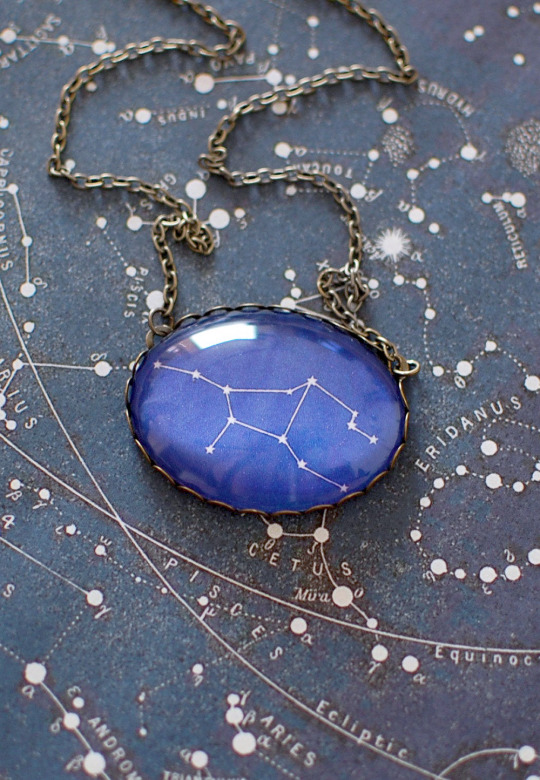


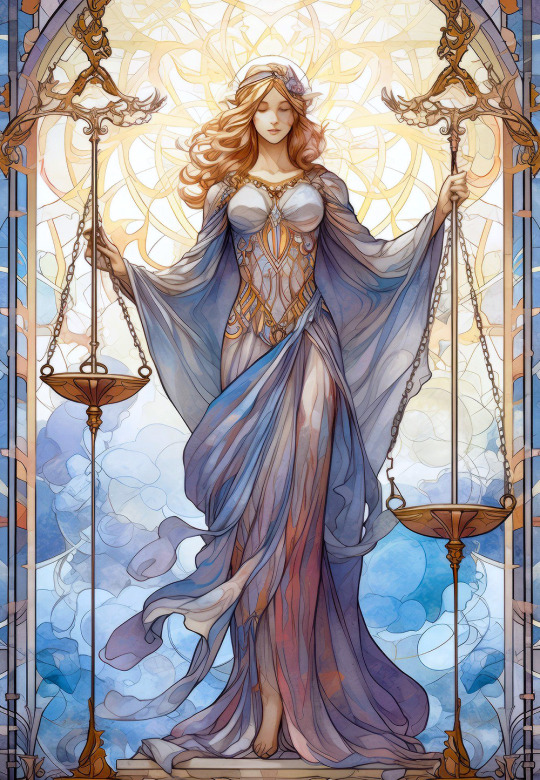
The Evermore Grimoire: Greek Mythology
Astraea (Ἀστραία, meaning 'star-maiden') was the virgin goddess of justice, innocence, purity and precision in greek mythology. She was also associated with Dike (goddess of justice) but not to be confused with Asteria (goddess of the stars). Astraea, the celestial virgin, was the last of the immortals to live with humans during the Golden Age, one of the old Greek religion's five deteriorating Ages of Man. According to Ovid, she abandoned the earth during the Iron Age. Fleeing from the new wickedness of humanity, she ascended to heaven to become the constellation Virgo. The nearby constellation Libra reflected her symbolic association with Dike, who in Latin culture as Justitia is said to preside over the constellation. In the Tarot, the 8th card, Justice, with a figure of Justitia, can be considered related to the figure of Astraea on historical iconographic grounds. According to legend, Astraea will one day come back to Earth, bringing with her the return of the utopian Golden Age of which she was the ambassador.
713 notes
·
View notes
Photo

Themis
Themis is the personification and goddess of divine law, will, and justice in Greek mythology. She was held in high esteem by the Olympians, often sitting by Zeus' throne and giving him wise counsel. Themis held the place of Oracle at Delphi before passing on her prophetic powers to Apollo. Common epithets of Themis include Gaia Themis ('Earth' and 'Right').
Themis was the daughter of Uranus (Heaven) and Gaia (Earth) and the second wife of Zeus. She is often depicted with the sword of justice and scales, symbolising the law and judgement she gives.
Birth & Family
In Hesiod's (c. 700 BCE) Theogony, Themis is the daughter of Gaia (Earth) and Uranus (Heaven). She is the sister of Oceanus, Rhea, and Cronus.
And then she lay with Heaven, and bore Deep-whirling Oceanus and Koios; then Kreius, Iapetos, Hyperion, Theia, Rhea, Themis, Mnemosyne, Lovely Tethys, and Phoebe, golden-crowned.
(Theogony, 136-140)
Themis became Zeus' second wife (although some sources say she was his first). Her children with Zeus represented the visible order of the world. They included the Horae (the Seasons), Eirene (Peace), Dike (Justice) and the three Fates (Clotho, Lachesis, and Atropos). In some sources, such as Aeschylus' (c. 525 to c. 456 BCE) tragedy Prometheus Bound, Themis is listed as being Prometheus' mother, although he is more commonly known as being the son of Iapetus and Clymene or Asia.
Continue reading...
39 notes
·
View notes
Text
dike fact sheet
hello everyone! as im approaching beginning to work with lady dike, i of course have been doing research. the small catch though is the fact there's barely any information on her. however, here's my best attempt at collecting information!
most of this information will be greek in nature, however due to how limited it is, i do also pull from information on her roman counterpart justitia. i mainly want to specify this, as justitia is simultaneously the roman counterpart of themis. any information related specifically to justitia will be marked as such.
final disclaimer, make sure to do your own research as well. i am NOT a scholar, just a very determined person with internet access.
---
who is dike?
dike is the goddess and daimona (personified spirit) of justice, her name literally translating to it. she is the enemy of all falsehood, and the protectress of the wise administration of justice.
dike is an attendant of her father zeus, she watches over mankind and approaches his throne with lamentations when a judge has violated justice.
in the tragedians, she appears as a divinity who severely punishes all wrong, watches over the maintenance of justice, and pierces the hearts of the unjust with the sword made for her by aesa (one of the moirai/fates). along with punishing injustice, she is also shown to reward virtue.
dike is identified with dikaiosyne (righteousness) and astraea (the constellation virgo, lit. starry one), both can be considered alternate names or epithets of dike. dike's opposite is adikia (injustice), who she is depicted as beating with a staff.
---
family
dike is the child of zeus and themis, and has two sisters, eunomia (good order), and eirene (peace). her and her sisters are the three horai-- the goddesses of the seasons and the gatekeepers of heaven (olympos).
she also has one daughter, hesychia (tranquility of mind). it can be inferred that she had her daughter virginally, as dike is referred to as a virgin/maiden in several writings. however, there's no story to how her daughter was born.
---
symbols and associations:
- the constellation virgo (as her epithet dike astraea, meaning dike the starry one)
- swords (in reference to the sword which she used to pierce the hearts of the unjust)
- staffs (in reference to dike using a staff to beat adikia)
- scales (roman-- the scales were originally a symbol of her mother, themis, but ancient rome syncretized dike and themis as the same deity, justitia)
- blindfolds (roman/contemporary-- in the 16th century justitia began to be depicted with a blindfold. this was originally satirical, depicting justitia as blind to the justice in front of her. it's now viewed as a representation of impartiality, "justice is blind.")
- frankincense (offering named in orphic hymns both to dike and dikaiosyne)
---
final note
thank you for taking time to read about this amazing yet obscure goddess! if you're more knowledgeable than me, and i got something wrong or there is more information i can add, please tell me! and if you do, please provide a source :]
my main source for this fact sheet is the theoi page for dike, however if you want sources for any of the other information i'll try my best to provide it at request.
#expect a upg post eventually#helpol#hellenic polytheism#dike#lady dike#goddess dike#paganism#hellenic paganism#deity work#deity worship#info
7 notes
·
View notes